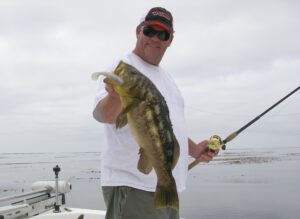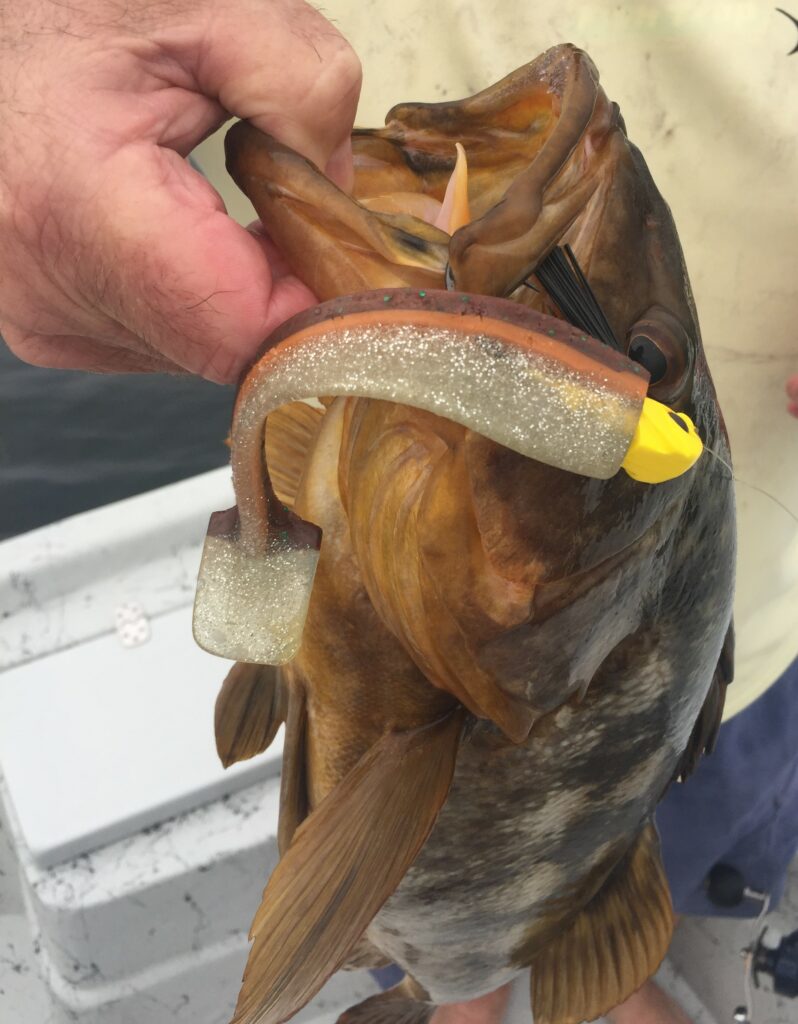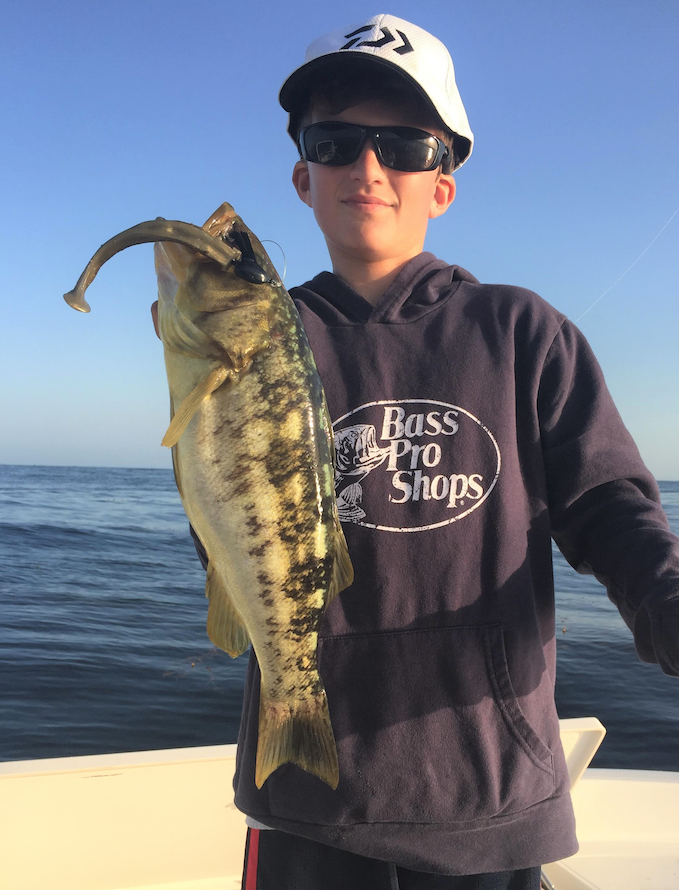BY CAPTAIN BILL SCHAEFER
SAN DIEGO – It’s a hot summer day and you want to get out for some calico bass fishing. Get the boat ready and set out for a day of sensational topwater action. There’s nothing like a bass rolling on your lure and exploding on it as it runs through the kelp.
As the waters off the Southern California coast warm the calicos head for the kelp in mass amounts. Large schools roam the kelp looking for anything they can prey on. That’s good for you as the introduction of a lure to the area usually means they will attack it, and some will eat your lures right off the surface. Cast and skip the lure across the surface over the kelp and when it hits a clearing they will explode on it. I’ve often seen several bass fighting over the same bait.
Now, you can fish thin streaks of kelp all the way up to the thickest stuff you can find. The bass are there. Remember the current plays a big part in the biting part of this equation. Usually, when the current is running down and in towards shore is the best. This is dragging the bait fish into the kelp and getting the fish really going, but any current can get the fish going. Up and in will work as well, but the current headed into the beach is best.
Sometimes the birds will show you where the feeding calicos are up on top as they dive on their leftovers. Sometimes you will notice puddling baitfish with calicos crashing through them. Usually near the edge of the surface’s visible kelp. Sometimes it’s just the baitfish coming to the surface being chased from below. You have to pay attention to what’s going on around you at all times if you are going to score.

I like to pick out the medium thick kelp, that is when the stringers are almost touching one another and then the current has then all laying side by side. I will throw my bait across them at a 90-degree angle and bring the bait over the stringers with a slight pause when I hit an opening and then the calicos will crush the bait either just as the bait goes to go over the next stringer as it falls off the previous one. Remember, not to pull the bait away from the fish. Give the bass a second to pull down on the bait and then set the hook. You will connect more often.
For equipment I use a Daiwa Lexa WN 300 loaded with either 15-pound Maxima Ultragreen on a DXSB Swimbait rod or the same set up with 50-pound braided line if on larger fish. You could use the equivalent spinning rod with the same set up as well. You need to be able to pull those bass out of the thick kelp. And, trust me they do go back down into the thickest stuff once hooked.
For jigheads I like a weedless jighead just like a flipping jighead from freshwater. That has the plastic hook guard in front of the hook. May great companies carry this type of head such as Yamamoto, Warbaits and Reeb’s Lures just to name a few. You want to go with a lighter head. I use a half-ounce head most of the time with my favorite choice of bait behind it. The plastic weed guard keeps you from catching onto the weeds, bringing them through for the bite.
For plastic baits there’s a ton of great companies out there who make all different swimbaits; Big Hammer, MC Swimbaits, Reyes Swimbaits, and Reebs Lures just to name a few. Colors are up to you but a little darker color seems to work better for me in the low light morning and then a more translucent color later under the high clear sky. There’s so

many to choose from so experiment and find your favorite.
Don’t forget about your favorite weedless swimbaits, too. These can tend to attract the larger fish and will work well reeled fast through the tops of the weeds. Pause at open holes in the canopy and they will explode up on the bait. Colors will be the same as the weedless baits above all made by the same companies.
Also a hot lure for the calicos is slug type lures with no weight. Just glide the slug over the stringers and let it fall into the holes and you will get bit. Rig them with a 7/0 or 8/0 wide gap Mustad hook and use about a 7- or 8-inch slug. Or another favorite of mine is a 7-inch Yamamoto Senko. Rigged the same way and then tossed into the thick kelp stringers letting it pause at openings. The bass will explode on it. Remember to give it to them for a second before you set the hook.
Also, iron can be deadly at this time although you have to run it down the alleyways between the stringers. A Tady 45 in a lot of different colors will work well. My favorite is green with gold edge or scrambled egg. I use a lighter set up to throw the iron around the kelp. An 8-foot Daiwa Lexa WN rod with a Lexa 400 loaded with 60-pound braid with a top shot of 30-pound Maxima. This will drag out the giants who bite this bait.
The next thing to do is to go down into the kelp a bit with a jerkbait. You will have to watch out for the stringers, but this can produce fish after fish on many days. Yo-Zuri, Daiwa, as well as many other companies make a variety of lures that will attract the calicos into biting. Mint, calico pattern, and scrambled egg are just a few of the colors I use just below the surface. Sometimes the bass are just shy of coming all the way to the top and this technique will get the bites for you.
Finally, go flipping the kelp with spider jigs of some type. This type of lure is made by Reeb’s Lures and a few other companies. Usually backed with a large grub, you toss it into the holes in the kelp and hang on because the fish will hit it on the fall as it flutters down to the bottom. The large Kalin-type grub lets the bait fall slowly attracting bites.
So as you stare at the kelp beds out there, lift you motor and drift across the kelp and get into the fun that can be had fishing the top water for the calicos. It takes a little learning but I’m sure you can do it. And, you will never want to put that topwater bait rod down as long as they’re up on top.




